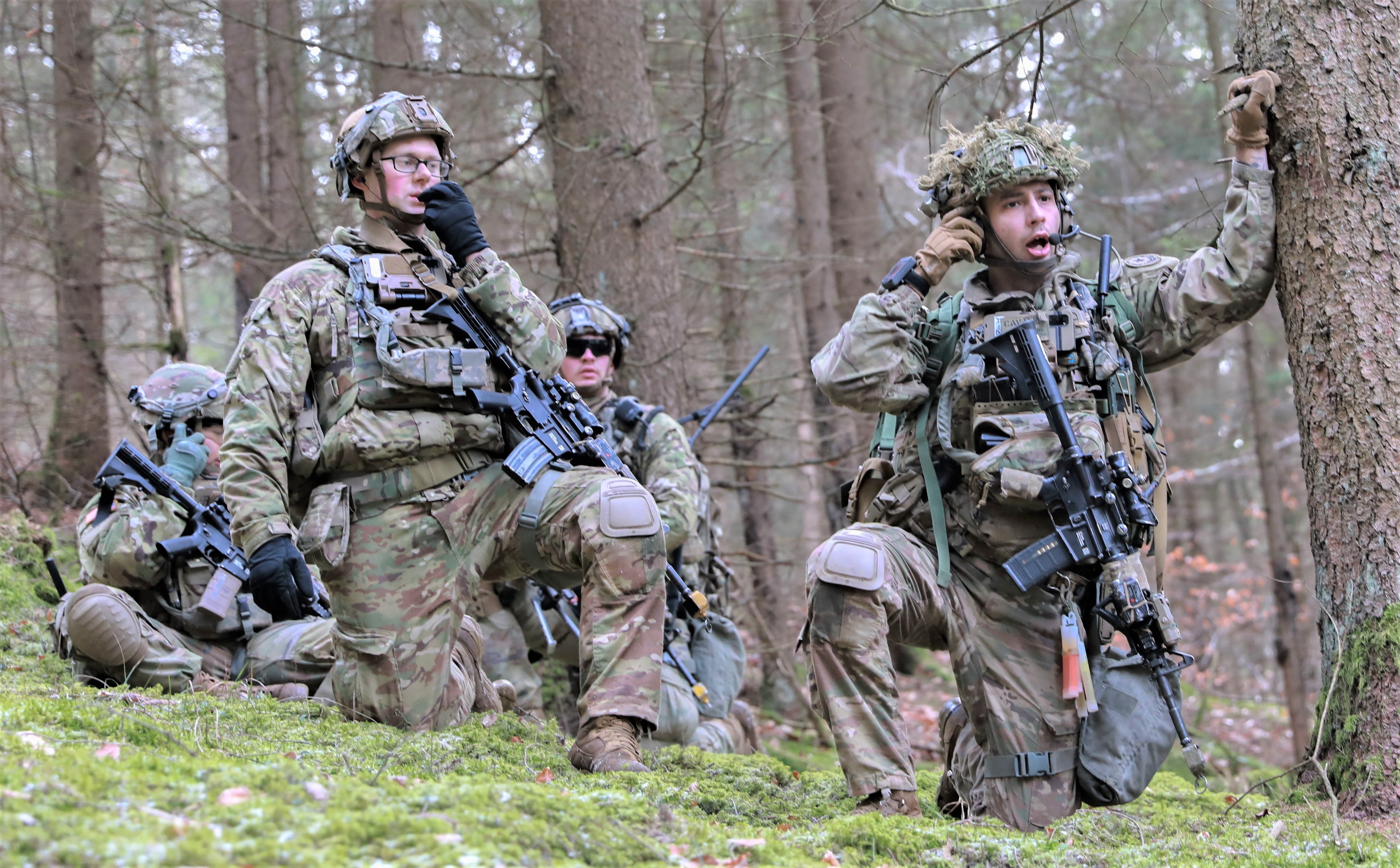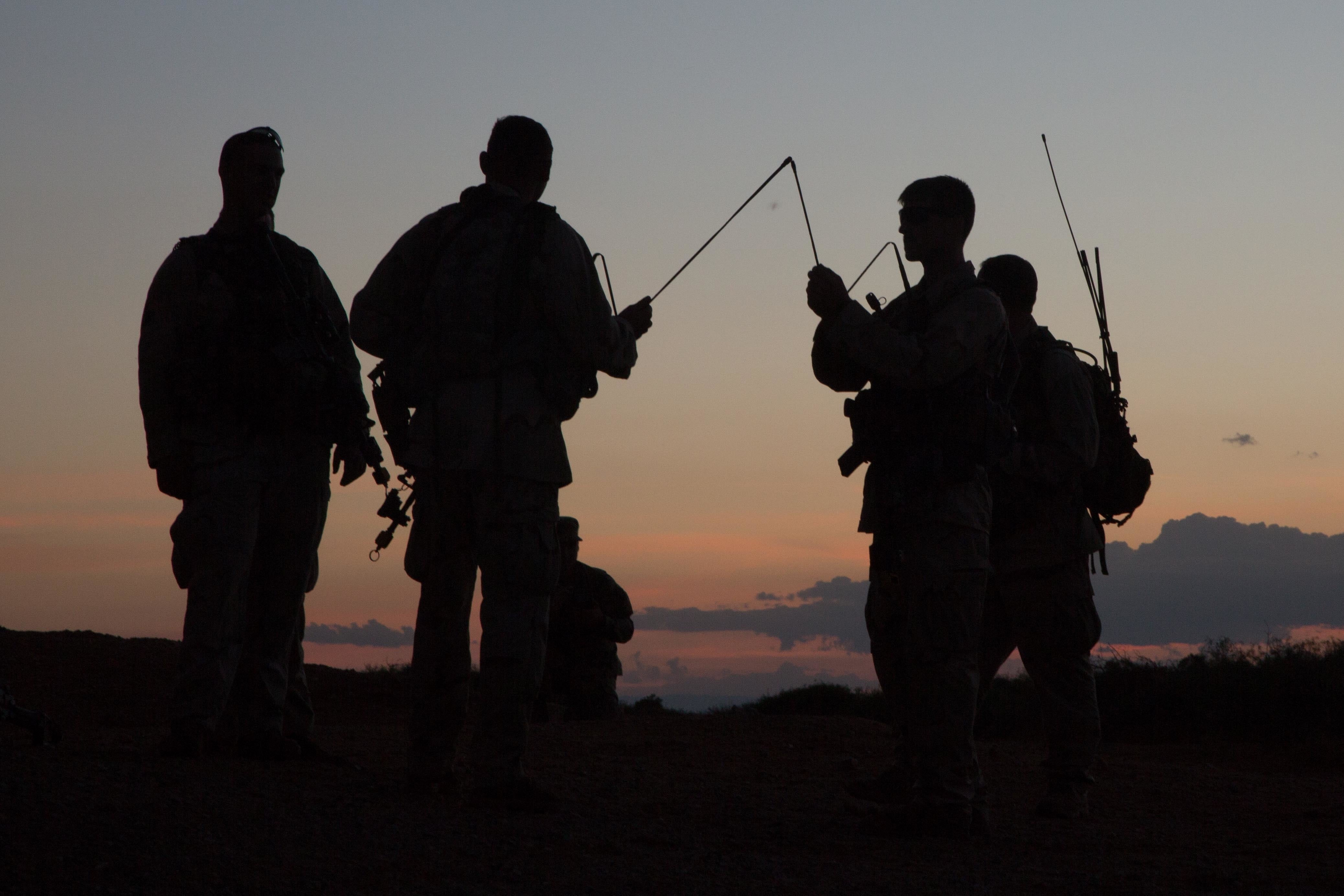In the next big war, the Army will continue to fight on the ground, but they’ll also be relying on space-based technology such as satellite surveillance, high-altitude balloons and long-range reconnaissance aircraft to protect their soldiers and disrupt the enemy’s attacks.
Top Army leaders released their vision of that effort on Monday. They want commanders to plan for how they’ll use such assets in future operations and called for greater investment in space capabilities and formations, describing them as an “urgent need” for the service.
The document, titled “Army Space Vision Supporting Multidomain Operations,” was signed by Secretary of the Army Christine Wormuth, Chief of Staff of the Army Gen. Randy George and Sergeant Major of the Army Michael R. Weimer and lays out how the service aims to focus on space assets for operational needs such as navigation, timing and long-range communications.
“Commanders at all echelons have access to, rely on, and can be observed by the space-based assets of allies and competitors alike,” reads the vision statement.
In an accompanying press release, George noted that integrating joint and Army space capabilities into operations must become “second nature to commanders at every echelon.”
That’s going to include “expeditionary, scalable and mobile Army space formations” alongside ground combat formations. That could mean units such as the Space Support Teams drawn from the 1st Space Brigade at Fort Carson, Colorado, forward deployed with traditional ground units.
The 1st Space Brigade currently supports Army operations worldwide, with a quarter of the unit deployed at any time across 17 locations in 11 countries, including Northern Command, European Command, Central Command and Indo-Pacific Command, according to the unit’s website.
To accomplish that, George noted in the release that the Army’s Space and Missile Defense Center of Excellence will work with the other Army centers of excellence and combat training centers to incorporate space-focused training, planning and assets.
That will involve putting space into common training scenarios. For ground units that may look like a trainer taking out satellite communications, or adversaries targeting their unit using space-based equipment.
“Commanders must understand that space capabilities start and end on the ground and be fully aware of their importance in planning and operations,” according to the vision statement.
In essence, commanders must know how they can use data from the Army or joint satellites, high-altitude balloons and fixed-wing reconnaissance aircraft such as the High Accuracy Detection and Exploitation System, or HADES, which can be used to detect enemy threats or conceal and protect ground forces from home stations to assembly areas to objectives.

Under the vision statement, Army leaders want their commanders to understand and use both the service and joint space capabilities, such as commercial satellites, to accomplish the mission while also finding ways to defend against any space-based attack from an adversary.
Army space professionals will “lead the effort to increase understanding and integration of friendly joint and coalition space capabilities” into Army operations while also interdicting the adversary’s use of space-based and enabled capabilities, according to the statement.
That means soldiers need to be organized and have the right resources, gear and expertise to use the advantages space can provide their unit while simultaneously using what they have to counter how their enemy is using space against them.
Specifically, the vision document calls on Army commanders to use joint, coalition and commercial space capabilities for needs such as positioning, navigation, and timing; beyond line-of-sight communications; force tracking; environmental monitoring; space domain awareness; geospatial information and deep sensing.
In recent years, the “deep sensing” portion of the Army’s new technology focus has included at least three new types of equipment.
The Army has invested in Terrestrial Layer Systems, or TLS, which give soldiers both cyber and electronic warfare tools, the HADES intelligence, surveillance and reconnaissance jet outfitted with advanced sensors and the Tactical Intelligence Targeting Access Node, or TITAN, which pulls together all of the data a unit’s sensors collects and distributes it across the formation, keeping everyone on the same page, data-wise.
All of these aim to give even a tactical unit such as a brigade its own ways to “see” deeper into the battlefield beyond a few kilometers, on its own, in case higher level commands such as divisions are too busy or if that brigade is cut off from its higher support. That’s a scenario Army planners project will become more common should U.S. forces face a peer adversary with its own advanced capabilities such as electronic warfare and communication jamming.
And that deep sensing is more than just seeing what’s going on beyond the horizon, it’s also crucial for striking the enemy.
“If we’re going to do long-range precision fires, you need to do long-range-precision targeting,” former Army Chief of Staff Gen. James McConville told C4ISRNET in 2023. “In order to do that, you have to have deep sensing.”
At the same time, commanders must also counter the growing space-based assets of adversaries such as the Russian and Chinese military. They’ll need to incorporate counter-satellite communications, counter-surveillance and reconnaissance using fires at every unit level.
In terms of gear, the Army will need to use the next generation of tactical terminals to access multi-orbit satellite communications services and space-enabled tactical intelligence, surveillance and reconnaissance platforms for deep sensing needs, according to the vision statement. That includes the previously mentioned TLS, TITAN, HADES and satellite communications as well as data processing equipment to pull information in from multiple sensors and process it for a clearer picture of the battlefield.

When a commander, especially at the brigade level or below, can fuse data from their unit and their allies’ sensors they can then have accurate targeting information which allows them or another to strike using precision fires, or maneuver to a better position to protect their own troops. And if they can do it at their level, they’re not relying on overtasked or distant commands for the support they need immediately.
The Army conducted a demonstration in 2020 showing it could take imagery from commercial satellites in orbit to Earth, process the data with artificial intelligence, detect threats and deliver targeting data to weapons systems in 20 seconds, Army Times’ sister publication C4ISRNET reported.
But the Army also has a program using its own cube satellites, three of which were in orbit as of mid-2021 under the Gunsmoke-J program, C4ISRNET reported.
Merging these space capabilities with other assets such as stratospheric, high-altitude balloons and long-endurance, semi-autonomous fixed-wing aircraft can provide “redundant and complementary capabilities” for the U.S. and its allies in contested environments with limited bandwidth.
By using both mobile ground and aerial platforms, units can also conduct space interdiction fires, such as jamming satellites or interfering with an adversary’s use of a space capability, which would disrupt their command and control, navigation, targeting and intelligence collection.
Forward-deployed multidomain task forces, using Army space interdiction forces alongside cyber operations and electronic warfare personnel will find ways to disable, disrupt or degrade the links that connect missile and radar systems, which currently keep U.S. forces at bay. Once those systems are offline, Army and joint units can strike.
However, the forward-deployed part is critical. Having forward-stationed Army space organizations means that those units will conduct “continuous operational preparation” to help set conditions to defeat enemy layered defenses, such as the Chinese military’s network of naval bases, air bases, ground radar and missile systems that detect and engage targets hundreds of miles from their shores, which will “open contested theaters in crisis and conflict.”
The vision statement does not include exact timelines, though the Army’s acquisition of systems such as the TLS, TITAN, HADES and the Gunsmoke-J and related satellite programs are new, some of which began in 2018. The service created and deployed the key units that will likely coordinate space-based assets, the three multidomain task forces, an effort that also began 2018. A fourth task force is expected to form in the coming years.
Todd South has written about crime, courts, government and the military for multiple publications since 2004 and was named a 2014 Pulitzer finalist for a co-written project on witness intimidation. Todd is a Marine veteran of the Iraq War.




